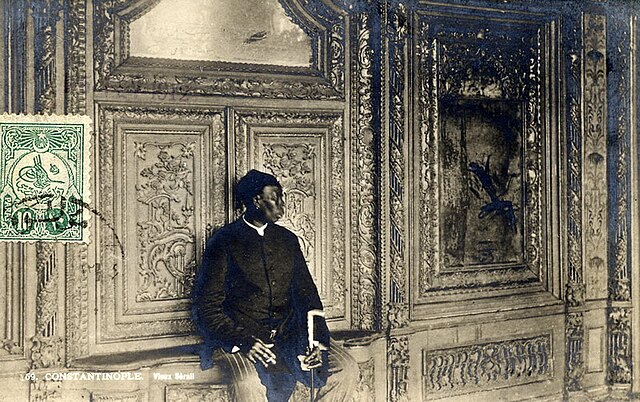A eunuch is a male who has been castrated. Throughout history, castration often served a specific social function. The earliest records for intentional castration to produce eunuchs are from the Sumerian city of Lagash in the 2nd millennium BCE. Over the millennia since, they have performed a wide variety of functions in many different cultures: courtiers or equivalent domestics, for espionage or clandestine operations, castrato singers, concubines or sexual partners, religious specialists, soldiers, royal guards, government officials, and guardians of women or harem servants.
The Harem Ağası, head of the black eunuchs of the Ottoman Imperial Harem
A group of eunuchs. Mural from the tomb of the prince Zhanghuai, 706 AD.
Limestone wall relief depicting an Assyrian royal attendant, a eunuch. From the Central Palace at Nimrud, Iraq, 744–727 BCE. Ancient Orient Museum, Istanbul.
Chief Eunuch of Ottoman Sultan Abdul Hamid II at the Imperial Palace, 1912
Castration is any action, surgical, chemical, or otherwise, by which a male loses use of the testicles: the male gonad. Surgical castration is bilateral orchiectomy, while chemical castration uses pharmaceutical drugs to deactivate the testes. Castration causes sterilization ; it also greatly reduces the production of hormones, such as testosterone and estrogen. Surgical castration in animals is often called neutering.
A 15th century Ottoman medical illustration by Sabuncuoğlu Şerafeddin depicting an operation for castration
The Castration of Uranus: fresco by Vasari & Cristofano Gherardi (c. 1560, Sala di Cosimo I, Palazzo Vecchio, Florence)
The procedure of castration as punishment during the 16th century
An Italian soldier who was castrated and emasculated during the Second Italo-Ethiopian War.








